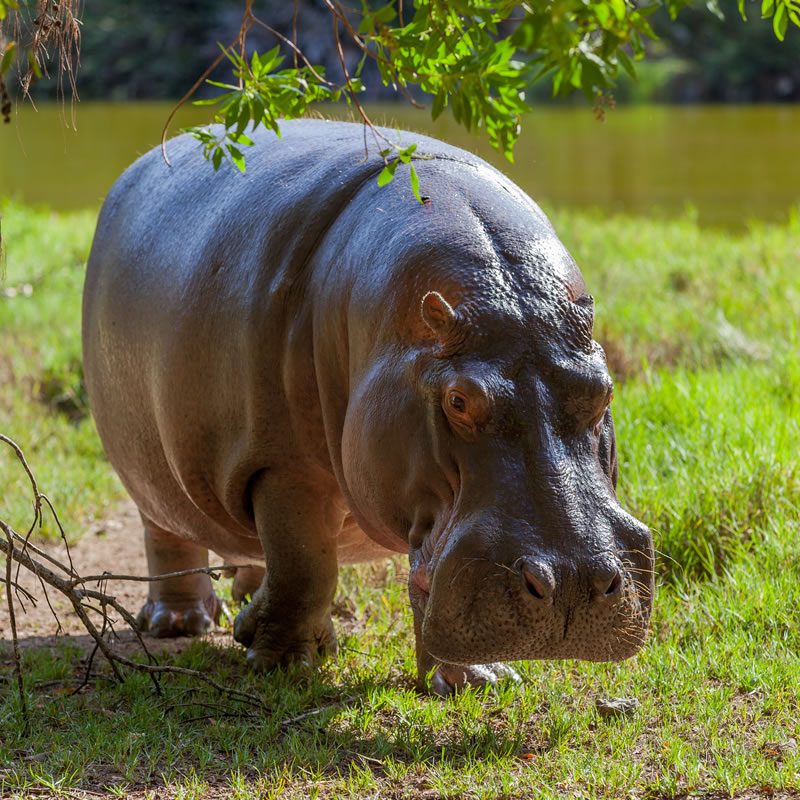
Scientific Name
Hippopotamus amphibius
Classification
| Kingdom | Animalia |
| Phylum | Chordata |
| Class | Mammalia |
| Order | Artiodactyla |
| Family | Hippopotamidae |
| Genus | Hippopotamus |
| Species | amphibius |
IUCN Redlist Status

Location and Habitat
Hippopotamuses are located in central and southern Africa, south of the Sahara desert and near the Nile River.
Diet
They are vegetarians and mostly eat grass. They may travel long distances during the night from their water source to reach the areas where they graze. They also sometimes eat fruit that has fallen off of trees or crops grown by local people.
Size
Hippos are one of the largest land mammals. They are a bit smaller than a white rhino, but weigh more. They grow to 12 - 15 feet long and weigh between 5,000 to 8,000 pounds. They can grow up to 10,000 pounds.
Description
They have gray, mostly hairless skin with pink bellies and pink around their mouths, eyes and ears. Their legs and tails are short and stubby. Despite their enormous size, they are surprisingly fast.
Reproduction
Hippos live in groups called bloats. Each bloat has one dominant male which is the only one that mates with the females. If another male tries to approach one of the females, the dominant male will threaten the intruder by opening its jaws wide, making a loud bellowing noise, and charging. If the intruder does not back down, a vicious fight often follows, with the winner gaining the right to mate with the females of the bloat.
Females reach reproductive age at about 5 to 6 years. They have a gestation period of around 230 days or 8 months. They give birth to one young at a time; in the rare case that twins are born, the mother will only care for one of them and the other is abandoned. Females will leave the bloat for a short time to go and give birth in seclusion.
Hippos have very delicate and sensitive skin. They excrete a reddish oil that helps to protect their skin from drying out. Because of this, it is sometimes thought that they sweat blood, which is not true. Another way they protect their skin is by spending a lot of time in the water. Their nostrils and ears are situated near the tops of their heads so that they can stay above water when most of their bodies are submerged. When the hippo goes completely underwater, the nostrils and ears will automatically seal up. Hippos have very long and sharp teeth. These teeth never stop growing, but stay worn down to a manageable size from frequent use.
Special Facts
Hippopotamus teeth are made of ivory, similar to the tusks of elephants. However, hippo ivory is even more highly prized because it does not turn yellow with age. It is commonly believed that George Washington's false teeth were made of wood; however, they were actually carved from hippo ivory.
Hippos are very aggressive and can be dangerous. It has been estimated that they have killed more humans than any other animal.
